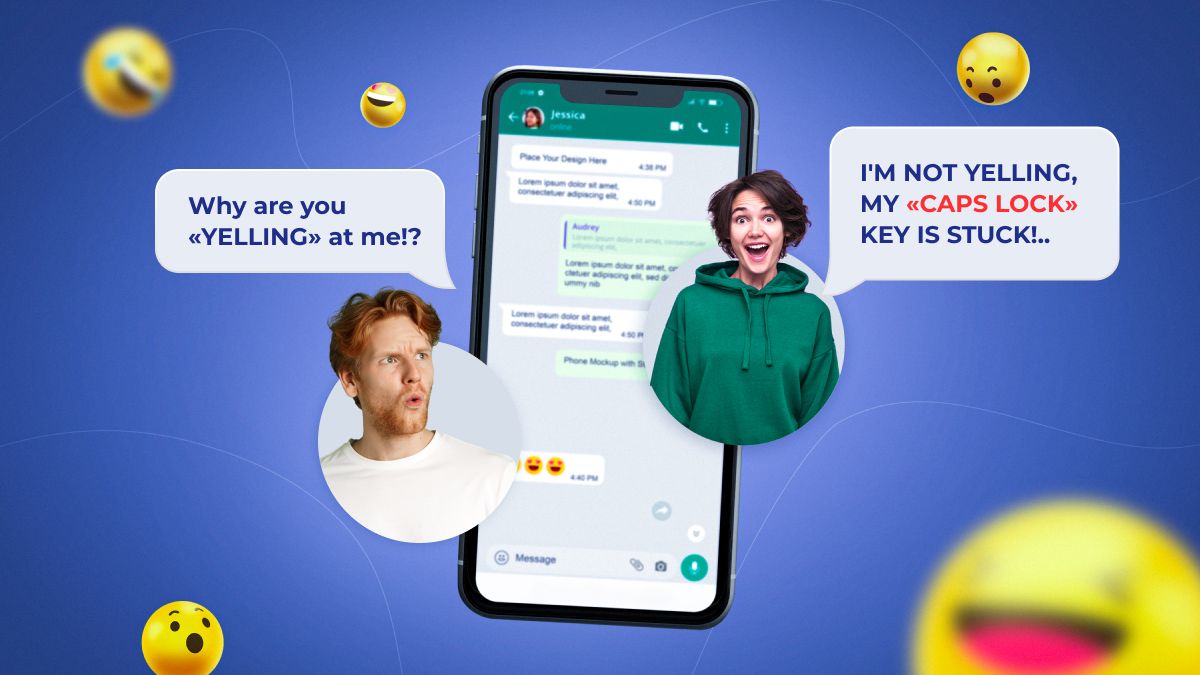
Error

Error

Error

Subscribed

The request was successfully sent

Error

Message sent

Error

There is "Maxnet" coverage at Your address

The request was successfully sent

No coverage

Error

Feedback sent successfully

Error

Feedback sent successfully

Error

Request sent successfully

Error

CV sent successfully

The request for the domain transfer is successfully sent

Error
28.08.2025
Internet
2315
Virtual communication has become part of our everyday lives. From chatting in chat rooms to communicating on social media, we use various platforms for work, study, and simply to stay in touch. But have you ever thought about the fact that online communication has its own rules of electronic etiquette? Yes, and even here there are things that can help you make a good impression or, conversely, ruin it.
What is netiquette?
Essentially, internet etiquette or netiquette (from the words «net» and «etiquette») is a set of formal rules of conduct that make virtual communication comfortable for everyone. These are not strict laws, but rather friendly advice on how to avoid appearing rude or disrupting the atmosphere of a conversation. Each of us has our own habits in chat rooms and social networks, but when everyone follows the basic rules, communication becomes more pleasant and misunderstandings are avoided.
It's like your grandfather's «be polite», only in a modern format: no trolling, respect for other people's opinions and common sense. No, these aren't boring rules, but rather tips on how to remain human even behind a screen.
Following netiquette helps make online socialising more enjoyable for everyone — both newbies and experienced users. Plus, if you play by the rules, you'll come across as an intelligent, interesting and simply pleasant conversationalist.
Let's take a look at the basic rules of netiquette that will help make your online communication enjoyable and effective.
1. Greetings as a mandatory first step
Whether you are writing to a colleague, friend or new acquaintance, starting with a greeting is basic politeness. Although this may seem obvious at first glance, there are those who often forget this in online chats.
How to greet someone correctly:
The main thing is that the greeting sets the tone for the conversation and allows you to immediately create a friendly atmosphere.
2. Keep it short and clear
Sometimes there are a lot of text messages, and you don't always have time to write a «poem». But keep in mind that messages that are too long in chats can be difficult to read.
Try to write to the point, dividing long texts into paragraphs. Use bullet points or lists — this allows you to convey information more clearly.
Also, don't forget that online communication is not the same as writing letters. Therefore, it is better to save long reviews for more formal situations, such as emails.
But don't go to the other extreme by sending each word in a separate message — that's also inconvenient. Such a message stretched out over several lines creates unnecessary noise in the chat and is annoying with constant notifications. Try to formulate your thoughts in one or several complete messages, rather than breaking them up into dozens of lines.
3. Be careful with caps lock
In different situations, caps lock (when all letters are capitalised) can have different meanings. In chats between friends, it can be just a fun and emotional way to express yourself, but in formal situations, it can be perceived as aggression or indignation and attract unwanted attention. Therefore, it is important to adapt your writing style to each specific situation.

How to use caps lock correctly so you don't look like someone who is constantly shouting at the screen:
4. Respect personal space
No one wants to be woken up in the middle of the night by messages on their phone. You need to consider when it is appropriate to write and when it is better to wait.
When you work with someone regularly, it is advisable to discuss with them personally when and how they can be disturbed. For example, would it be okay for them to receive messages in the evening, provided that you don’t expect an immediate response?
And, of course, it is worth remembering that sending work messages at night without urgent need is a faux pas. An exception may be a situation where it is a personal exchange of messages and your interlocutor is in a different time zone. Or if the team has a special work chat, and all participants are allowed to turn off notifications outside of working hours and send ideas there even at three in the morning.
If you still need to write in the evening or at night, the best and most neutral way is to send an email, which the person can read when it is convenient for them. Although there are also universal rules for correspondence: start working with correspondence at 10:00 a.m. and do not write after 6:00 p.m. If you need a reply to an email in a short time, simply set a deadline so that the recipient can meet it.
5. A little respect goes a long way
In chat rooms, it's not just what you write that matters, but how you present it. Small things can have a big impact on the impression and atmosphere of the conversation. Here are a few rules of electronic etiquette that really matter:
If you don't have time to reply right away, just write something like «I'll get back to you later today» or «I can't reply right now, I'll get back to you after 3 p.m.». This will show that you are available and respect the other person's time.
If someone has sent you a long or important message, simply replying with «OK» may seem a little dry. It's better to add something simple, like «Got it, thanks!» — that sounds much warmer.
Of course, chatting is not a dictation test, but constant mistakes and a lack of punctuation spoil the overall impression. If you want to be taken seriously, try to stick to the basic rules of writing. This is especially important in professional or semi-formal communication.
6. How about communicating by voice?
Nowadays, an unexpected call is almost like an unannounced guest. It seems like no big deal, but it can catch you off guard, especially if it's a video chat (not everyone is always dressed up instead of wearing their usual pyjamas at home).

So before you press «Call», just write to the person: «Do you have a minute to talk?» or «When is a good time to talk?» It's a small thing, but it shows your respect for the other person's personal space.
The same applies to sending voice messages (especially long ones) without warning. Before pressing «Send», warn the other person or ask if they would prefer to listen to a voice message rather than read a text message.
If you agree, you can use your voice. If you don't agree, you write. And everyone is happy.
7. Emojis and smileys: to use or not to use?
Emojis and smileys have become part of online communication culture. They can make your conversations warmer and friendlier. But if you overuse them, it can seem frivolous or even inappropriate.
When to use emoticons:
When is it best to refrain from using emojis?
8. Brackets in chats: nostalgia or cringe?
If you are one of those who are used to writing smiles the old-fashioned way — ), :) or :-) instead of using modern emojis, here are a few thoughts to help you decide whether to continue this trend in your online conversations:
So if you feel comfortable using older versions of emoticons and it doesn't interfere with communication, you can keep them in your arsenal. But if you want to stay on trend and communicate with a younger audience without any unnecessary questions, it's better to use modern emojis.
9. Stress-free online meetings
Virtual meetings have long been commonplace for teams that work remotely (e.g., in the IT industry). To make this process effective and comfortable for all participants, it is important to know how to behave during such online meetings:
Make sure your microphone is working and your camera shows you at your best. It is a good idea to test the sound and video before the meeting starts. You can do this in a separate room or even in a conversation with a colleague.
It's better to be ready for the meeting a few minutes before it starts. If you know for sure that you will be late, be sure to warn everyone in advance. No one likes to wait, especially in online meetings, where everything should be clear and convenient.
Unless otherwise agreed, it is advisable to turn on your camera. When you can see each other, it creates a sense of presence and makes the meeting more personal.
If you are working from home or another location where there are many things or people, try to make the background neutral and organised. You can set up a virtual background if the programme allows it.
Chat in video conferencing software is great for asking questions or commenting without interrupting the speaker. But don't get carried away with emoticons or messaging that is not related to the meeting.
If you are not speaking at the moment, it is better to turn off your microphone. This will help you avoid background noise that may distract other participants.
Respect other people's time: if the meeting is scheduled for a specific time, try to stick to the schedule. When asking questions or commenting, don’t interrupt other participants or stray from the topic under discussion.
10. Don't forget about a personal approach
Imagine that you receive a standard response from someone, such as «Thank you!» It may seem formal, but again, humanity is important. To make your response more personal:
In general, one of the major challenges of online communication is the lack of non-verbal cues. You cannot see the person's facial expressions or hear the intonation of their voice. This can lead to misunderstandings. If you think the other person is writing something aggressive or inattentive, don’t rush to conclusions. Just ask if everything is okay.
Always try to stay positive and be polite, even when communicating in stressful situations. We are all human beings, and everyone can have a bad day — let's remember that. Our tips on internet communication etiquette will help you remain a pleasant conversationalist even through a screen.
Rate
5.0
Share
Comments
0
Еще комментарии